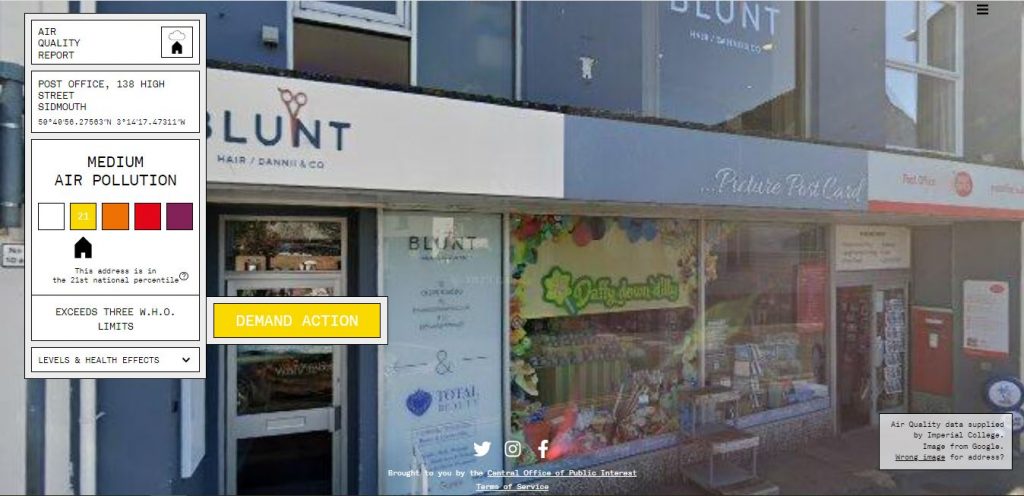“Where is the most polluted spot in Sidmouth? Looks like the Post Office roundabout is a contender.”
.
The politics of air pollution has been ratcheting up – with the Ruislip byelection putting the Ultra-low emissions zone firmly on the wider national map, and with today’s court ruling that the new Ulez policy can be rolled out to the rest of London.
Beyond the politics, how bad is air pollution in the UK – and how bad is it for our health?
According to the government’s own Office for Health Improvements:
In the UK, air pollution is the largest environmental risk to public health.
The annual mortality of human-made air pollution in the UK is roughly equivalent to between 28,000 and 36,000 deaths every year. It is estimated that between 2017 and 2025 the total cost to the NHS and social care system of air pollutants (fine particulate matter and nitrogen dioxide), for which there is more robust evidence for an association, will be £1.6 billion.
The levels and impact of air pollution are certainly not good in our cities – but how are they in East Devon in general – and in Sidmouth in particular?
The District Council states that “Air quality in East Devon is generally excellent”, which is good news; and websites which focus on this issue state that Sidmouth’s air quality is also “excellent”, that “the air quality is ideal for most individuals” and that its air pollution is “low”.
However, if specific hotspots are looked at in more detail, a more disturbing picture emerges.
Back in May 2022, analysing key streets in town showed that there was “significant air pollution” in Sidmouth.
To measure such area-specific levels of pollution, there are some excellent maps available – with an interactive map of greenhouse gas emissions and a general emission map where you can chose the pollutant. The website used back in May 2022 was where you can get “a free Air Quality report for your address”.
Returning just over a year to that same website addresspollution.org and entering in the postcodes used for those same addresses which were looked at then – the picture remains very much the same:
- the Royal York & Faulkner Hotel on the Esplanade
- the Rising Sun pub at the main crossroads in School Street Sidford
- the Sidmouth Post Office at the crossroads at the top of the High Street
- the Woodlands Hotel at the crossroads on Station Road
- the Bedford Hotel on the Esplanade
- Peak Hill Road going out of Sidmouth
As a commentator said back in May last year: “Where is the most polluted spot in Sidmouth? Looks like the Post Office roundabout is a contender.”
Here are the figures from today for Sidmouth Post Office, 132 High St, Sidmouth EX10 8EE – as given by Imperial College London:
Pollutant one: PM2.5
At this address, the annual average of the pollutant PM2.5 is 7.32mcg/m3. The World Health Organization limit is 5mcg/m3.
These particles, which are less than 2.5 micrometers in diameter, can cause asthma, respiratory inflammation and jeopardize lung functions.
Pollutant two: PM10
The reading for PM10 at this address is 15.06mcg/m3. The limit is 15mcg/m3.
PM10 can cause wheezing, bronchitis and reduce lung development.
Pollutant three: NO2
The reading for N02 at this address is 12.08mcg/m3. The limit is 10mcg/m3.
Long term exposure to even low levels of this toxic gas increases mortality rates and contributes to the development of asthma, and other respiratory issues.
With a visual representation here:

Click on the arrow ‘levels and health effects’ for those full figures at addresspollution.org
.